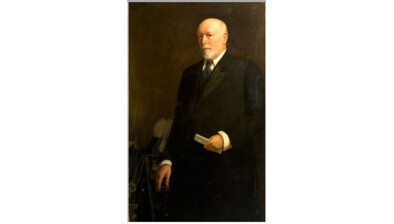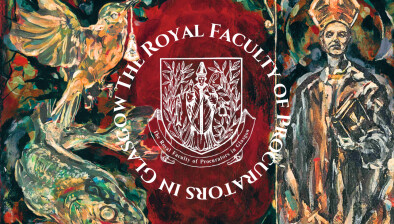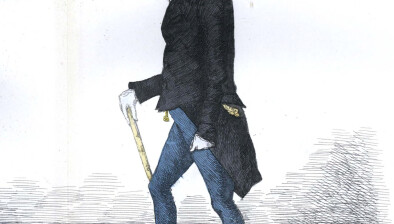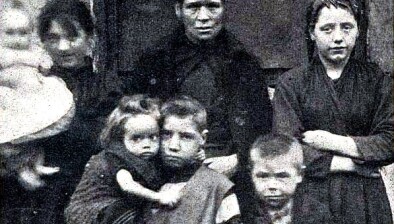Our Legal Heritage: The Douglas Cause
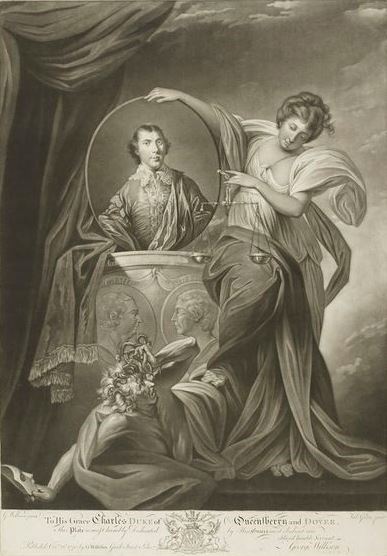
Original painting by George Willison (1741-1797), engraved by Valentine Green (1739-1813). Original mezzotint print, published 1770. Print commemorating the victory of Archibald Douglas in the House of Lords. A portrait of Douglas appears in the medallion, supported on a plinth by a figure of Justice. The plinth bears two medallion portraits of the Lords Mansfield and Camden, who were judges in the case. At the foot of the plinth, trampled underfoot, lies the figure of Deceit, holding a mask.
“O Lord of Infinite Mercy and Great Compassion, this is a day of great Perplexity with me and of great trouble and distress…my crimes are gone over my head and are a heavy burden…cleanse me from all my vileness and wickedness and make this guilty heart yet a sacrefise [sic] of Praise unto thee,” wrote Lady Jane Douglas, the daughter of the richest 18th century Scottish aristocrat. The document, unearthed in 2008, throws the verdict of the great 1760s’ Douglas Cause back into question. Sparking pistol duels, death threats and mass riots, the inheritance of the vast Douglas estates across Scotland was the biggest lawsuit in Scottish history at its time and enthralled high society across Europe.
Archibald Douglas, 3rd Marquess and 1st Duke of Douglas, was the one of the richest men in Scotland and though a little mad – he slew his cousin on one unfortunate occasion – his house and its successor were in order. His powerful relations, the Dukes of Hamilton, were descended through the male line of his great-great grandfather William Douglas, 1st Marquess of Douglas, and were poised to inherit the jackpot.
Archibald had remained childless, and his only other sibling, 48-year-old Lady Jane Douglas, had secretly married the unsuitable and comparatively poor Colonel John Stewart. Fearing the ire of several creditors, the couple had fled to Europe, settling in Paris. It was there that Lady Jane allegedly gave birth, at the age of 50, to twin sons, thereby creating a stronger claim to the Douglas estate.
Twenty years later the old Duke still refused to recognise the dubious heirs, till one day his wife persuaded him otherwise. After settling the estates upon the claimant Archibald Stewart, the only surviving “son” of Lady Jane, he died 10 days later. The enormous inheritance, worth £12,000 per annum (the equivalent of over £3 million today), fell into the lap of the Paris-born lad with inexplicable origins on the 9th September, 1761.
It took only a year for the Hamiltons to launch an action in the Court of Session. The intensity of proceedings in the next five years resulted in the publishing of 1,000 page statements on the case from both sides, and a legal bill estimated at a staggering £100,000. Among the lawyers to be enriched was the brilliant but eccentric James Burnett who became Lord Monboddo. The immense public interest in the case even brought philosopher David Hume and economist Adam Smith to weigh in on the side of the Hamiltons.
After the longest ever pleading diet, lasting a total of 21 days, the Lord President of the Court of Session, Robert Dundas, cast the deciding vote in favour of litigant James Hamilton. Riding a wave of public outcry, Douglas’ lawyers immediately launched an appeal to the House of Lords.
With £100,000 bets said to be waged on the outcome, the month-long hearing was heated. It is said the stalwart Hamilton lawyer Andrew Stuart, having heard Tory MP Edward Thurlow “arguing the case in favour of Mr. Douglas”, challenged him to a pistol duel in which they both missed. The verdict however, spelled disaster for the Hamiltons, with Lord Chief Justice Mansfield’s eloquence being the seeming deciding factor in favour of Douglas.
The news was met in Edinburgh with wild joy and a rampaging crowd plundered the Hamilton apartments in Holyrood Palace. After two days, the military had to be called in to restore order. Archibald Douglas became one of the richest men in Scotland, though the scandal prevented him from becoming a high ranking peer. Perhaps the enigmatic Lady Jane, brought up on “principles of the strictest piety”, died with her darkest of secrets.
Further Reading:
Karl Sabbagh: The Trials of Lady Jane Douglas
Lillian De La Torre: The Heir of Douglas
Steuart, A. Francis: The Douglas Cause







